
Among the abundance of sights of the ancient German city of Nuremberg, shrines - churches, cathedrals, chapels and monasteries - stand out in a separate group.
The most important and visited churches of Nuremberg are located in the Old Town (Altstadt Nuremberg), which is surrounded by a former city wall with fortifications and which is the heart of Nuremberg and a popular meeting place, walks and recreation, both among locals and numerous tourists from all over the world. Learn more about the Old City of Nuremberg...
The Church of the Virgin Mary or Frauenkirche is the main shrine of the city. It was built as an imperial court chapel and a hall church building from 1352 to 1362 on the initiative of Emperor Charles IV.
The powerful exterior Gothic appearance of the church immediately catches the eye.
In the upper part of the facade there is an art clock with moving figures. The balcony with colorful figures opens annually Christmas market. Every lunch break at 12 o'clock in the afternoon, the figures on the balcony "walk" - seven electors who have the right to elect emperors pay tribute to the Roman-German emperor Charles IV.
The interior of the Frauenkirche has three naves separated by tall columns.
The interior is dominated by the organ and the main altar, as well as numerous preserved works of art, including from the Middle Ages. More about the Frauenkirche…
The Frauenkirche is located on the main The market square of the city, at the address: Hauptmarkt, 14.
Frauenkirche website: frauenkirche-nuernberg. More about the Frauenkirche...
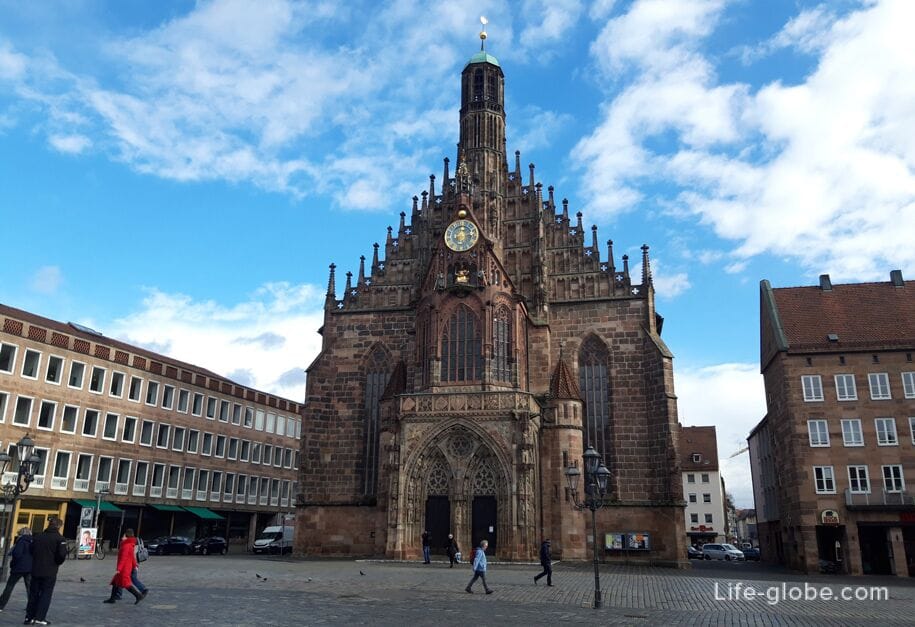

St. Lawrence Church (Lorenzkirche) is one of the first churches in Germany to become Lutheran (since 1529).
The construction of the church took place in the period, presumably between 1243 and 1315, on the site of a former chapel in the Romanesque style. Subsequently, the church was expanded.
Today, the Gothic Lorenzkirche is one of the most outstanding buildings in Nuremberg.
The interior of the three-nave church impresses with its rigor and abundance of details. Powerful columns with arched ceilings complement the overall Gothic ensemble.
Church address: Lorenzer Platz, 1.
Website: lorenzkirche. More about the Lorenz Church...
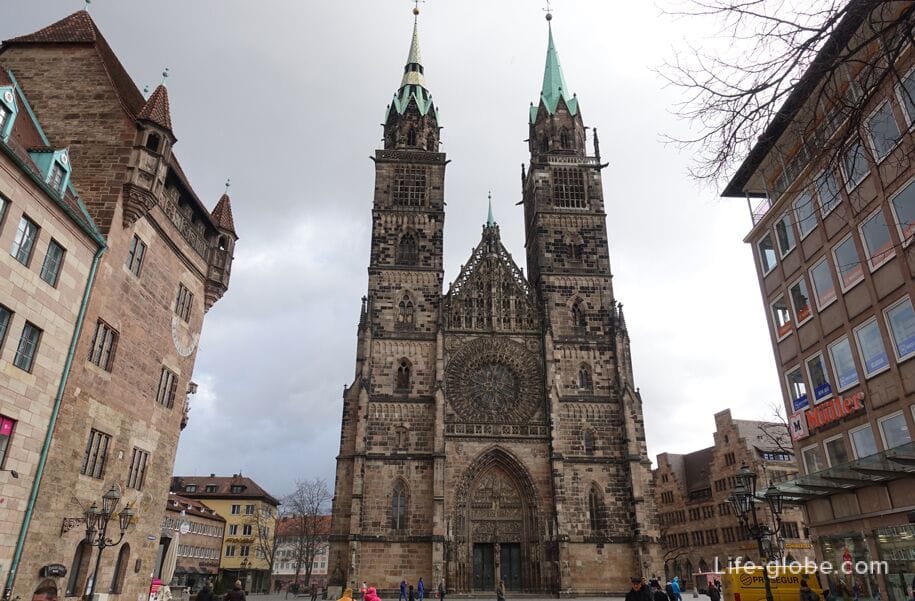
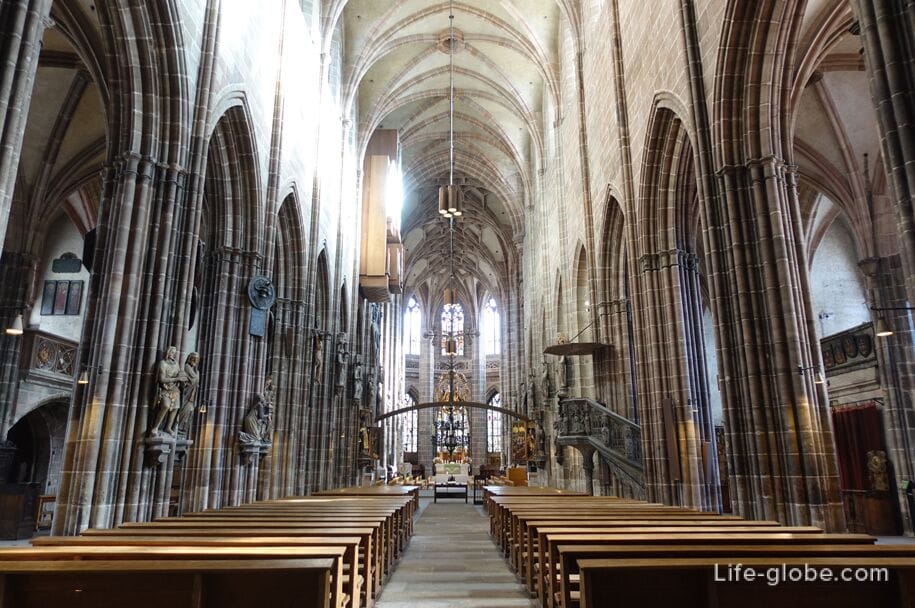
The Church of St. Sebald (Sebalduskirche) is the oldest parish church in Nuremberg and one of the most prominent church buildings in the city.
The construction of the Late Romanesque basilica with two choirs began in 1225-1230, on the foundation of the walls of the previous church, presumably dedicated to St. Peter.
By 1379, the side aisles of the church were expanded, the towers were raised in the high Gothic style and the altar of the late Gothic hall was built. Two towers were added in the 15th century.
Especially popular is the Schreyer-Landauer Epitaph (Schreyer-Landauer-Epitaph), located near the northeast end of the building.
The interior of the church has three naves separated by powerful columns with arched ceilings.
The interior reflects more than seven centuries of faith and the history of Nuremberg art.
Church address: Winklerstraße,26.
Website: sebalduskirche. More about St. Sebald's Church...

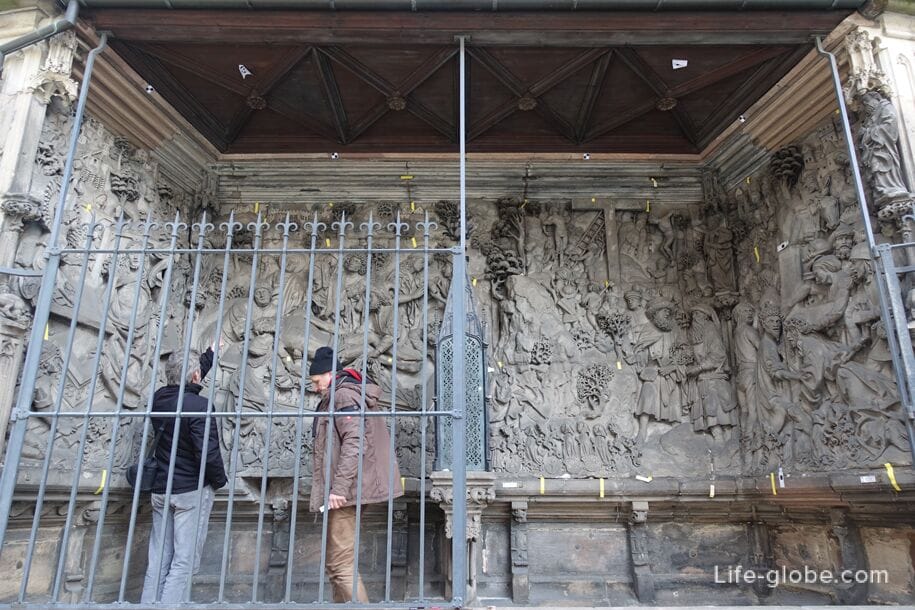
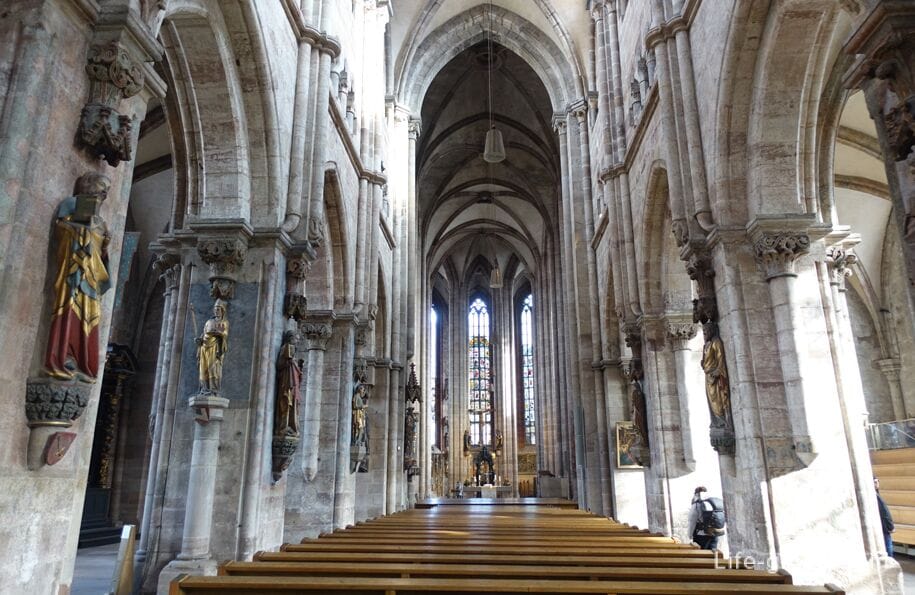
The church of St. Martha (Marthakirche) dates back to the 14th century and has a Gothic style. There is an organ inside.
The hidden location of the church is noteworthy - in the gap between two houses.
Services and concerts are held in the church.
Church address: 79 Königstraße.
Website: stmartha.
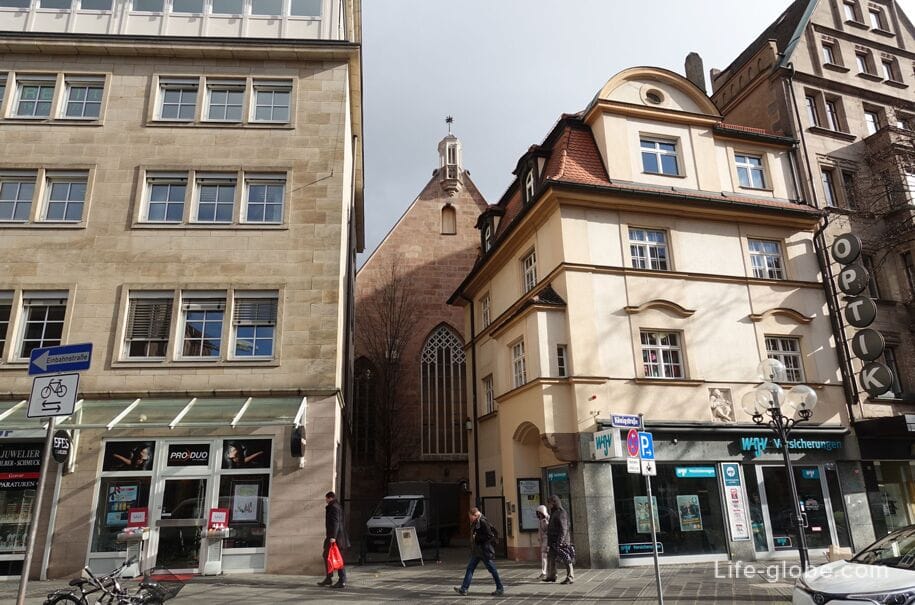
The Church of St. Clara (Offene Kirche St. Klara) or Klarakirche is a Roman Catholic church, which is one of the oldest preserved sacred buildings in Nuremberg.
The construction of the Romanesque-style church was started in 1270. The consecration took place in 1274.
Since 1996, St. Clare's Church has been an open church without a parish with a wide range of spiritual and cultural offerings and events.
Today, the architecture of St. Clare's Church appears to be mainly a Gothic building with few Romanesque elements - the arch of the main portal, the remains of the cornice, individual Romanesque arched windows.
Church address: 64 Königstraße.
Website: st-klara-nuernberg. More about St. Clare's Church...

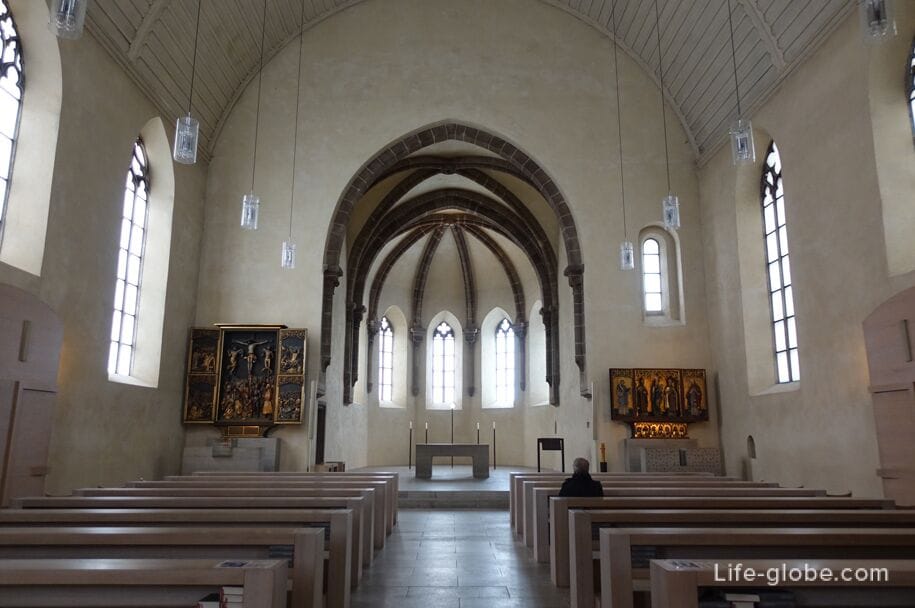
The Church of St. Elizabeth (St. Elisabeth Church) or Elisabethkirche is a Catholic church, which is distinguished by a clear and simple geometry and is one of the few buildings in the Classical style in the center of Nuremberg.
The current church was built between 1785 and 1903.
Today's massive rear church with an impressive dome 50 meters high has a high portal framed by columns with pilasters and pediment.
The interior of the church attracts attention with marble-lined columns with golden pilasters. There is a crypt in the church.
Church address: Jakobsplatz, 7-7a. More about St. Elizabeth's Church...
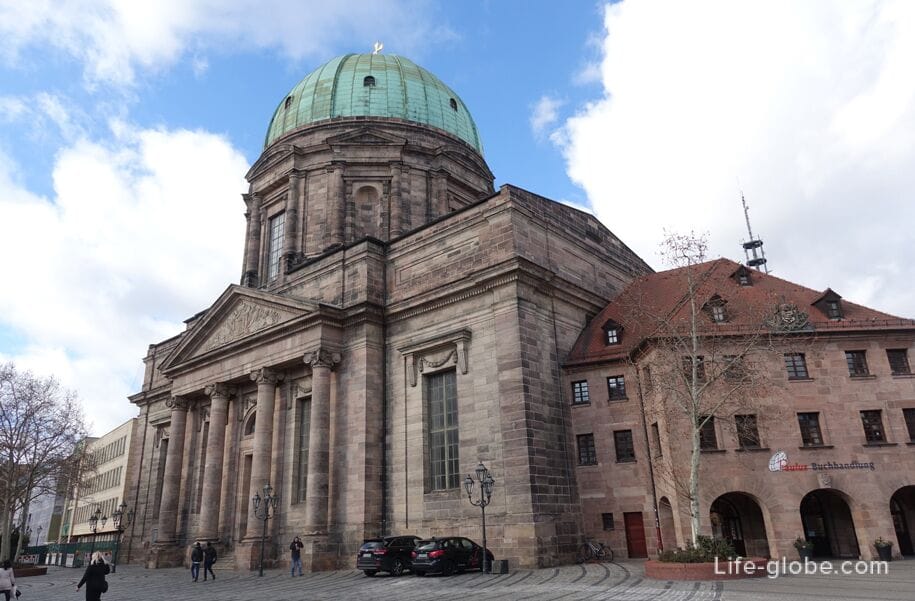
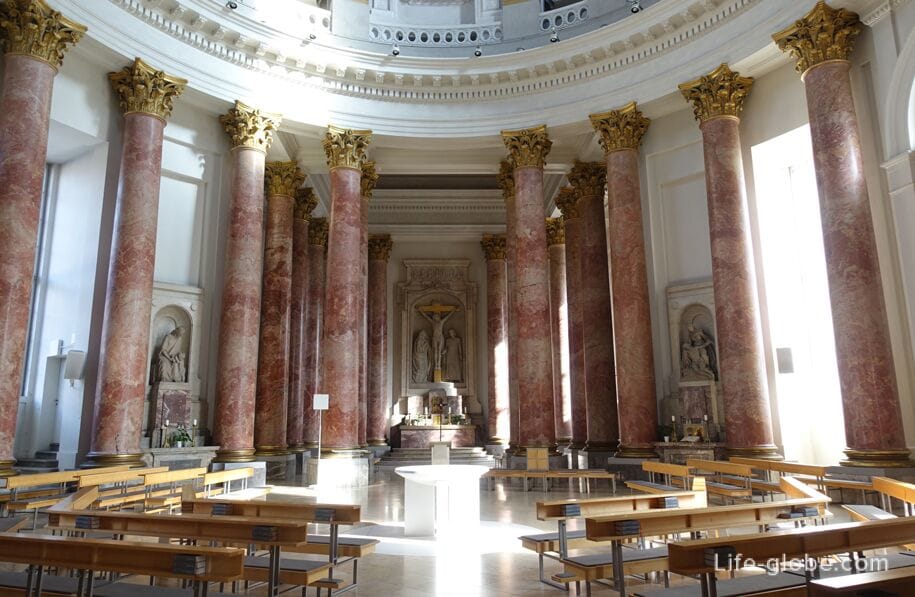
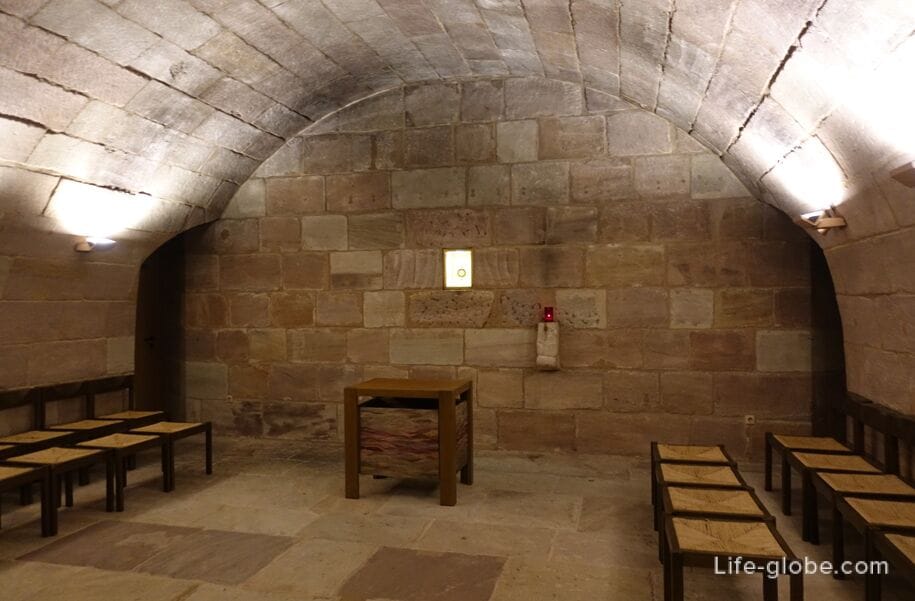
The Church of St. James, or St. Jacob (Kirche St. Jakob) is an Evangelical Lutheran church built in the 13th century on the site of a small chapel. In the 17th century, a large-scale reconstruction of the shrine was carried out.
The Jacobskirche is a typical structure of the Gothic era with a pointed belfry tower with four bells.
The interior of the one-nave church is simple and strict.
Church address: Jakobsplatz, 1.
Website: jakobskirche-nuernberg. More about St. Jacob's Church...

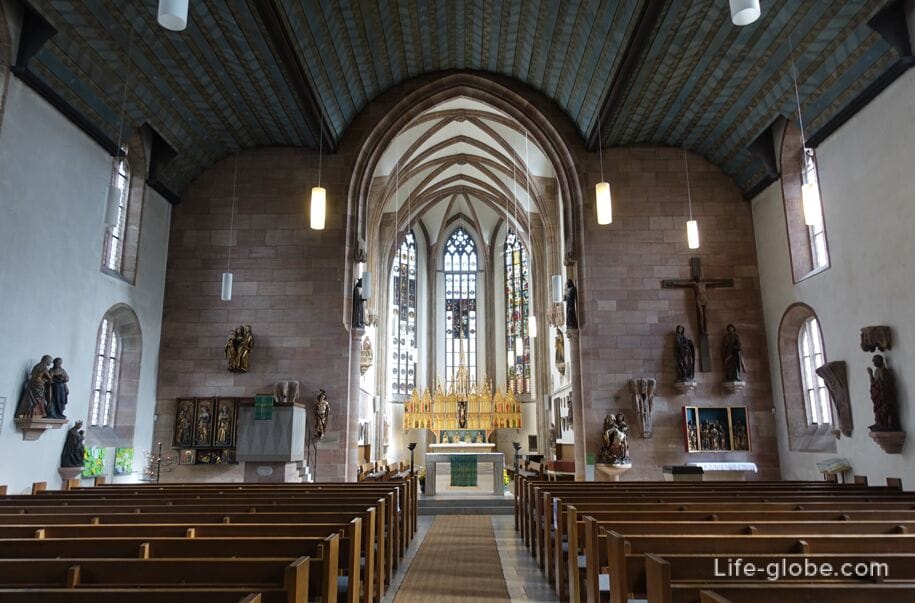
The Church of St. Egidien (Die Kirche St. Egidien) is one of the oldest and only Baroque churches in Nuremberg.
The church was built in the period from 1711 to 1718, on the remains of a medieval monastery church, rebuilt in the early 12th century and almost completely destroyed by fire from 6 to 7 July 1696.
The interior of the shrine is made in classical and Corinthian styles. The coats of arms of the Nuremberg patrician families are framed with stucco.
The church has an organ whose history dates back to 1460. Today's main organ was built in 1963 by the Rieger Orgelbau organ company.
Church address: Egidienplatz, 12.
Website: egidienkirche.
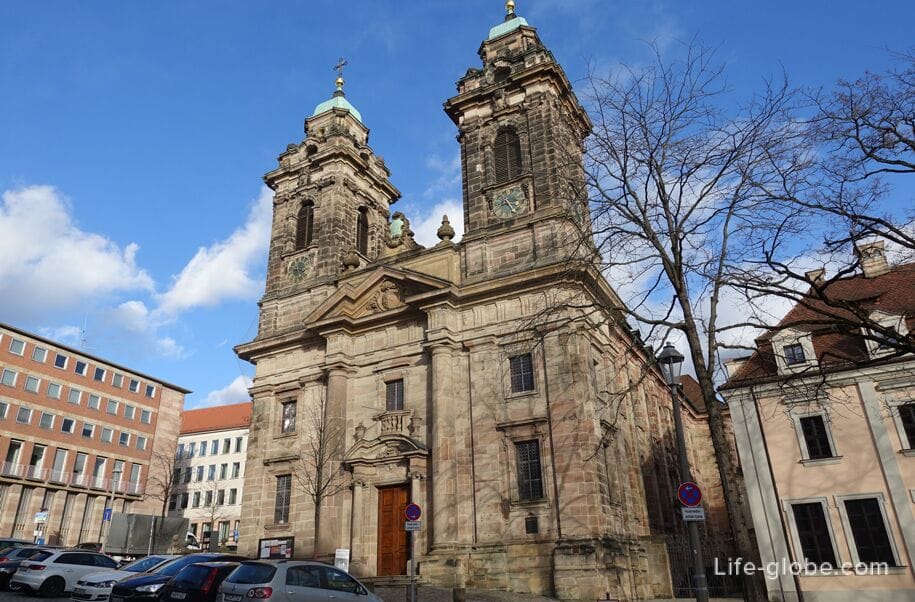

The Landau Chapel (Landauerkapelle), also known as the Chapel of All Saints (Allerheiligenkapelle) is a late Gothic building built according to the plan of the Nuremberg architect Hans Beheim the Elder between 1501 and 1510 as the chapel of the House of the Twelve Landauer Brothers.
Albrecht Durer created the painting "Adoration of the Holy Trinity", also known as the "Landauer Altar" (Allerheiligenbild, Landauer Altar), in 1511 for the chapel commissioned by Matthias Landauer. The painting is now in the Kunsthistorisches Museum Wien, the original frame is in the German National Museum in Nuremberg (Germanisches Nationalmuseum). A copy of the painting can be seen in the chapel itself.
In the chapel is the burial place of merchant Matthias Landauer.
The chapel is located near the Clock Tower (Laufer Schlagturm), at the address: Landauergasse, 1.
Website: reformkatholiken.

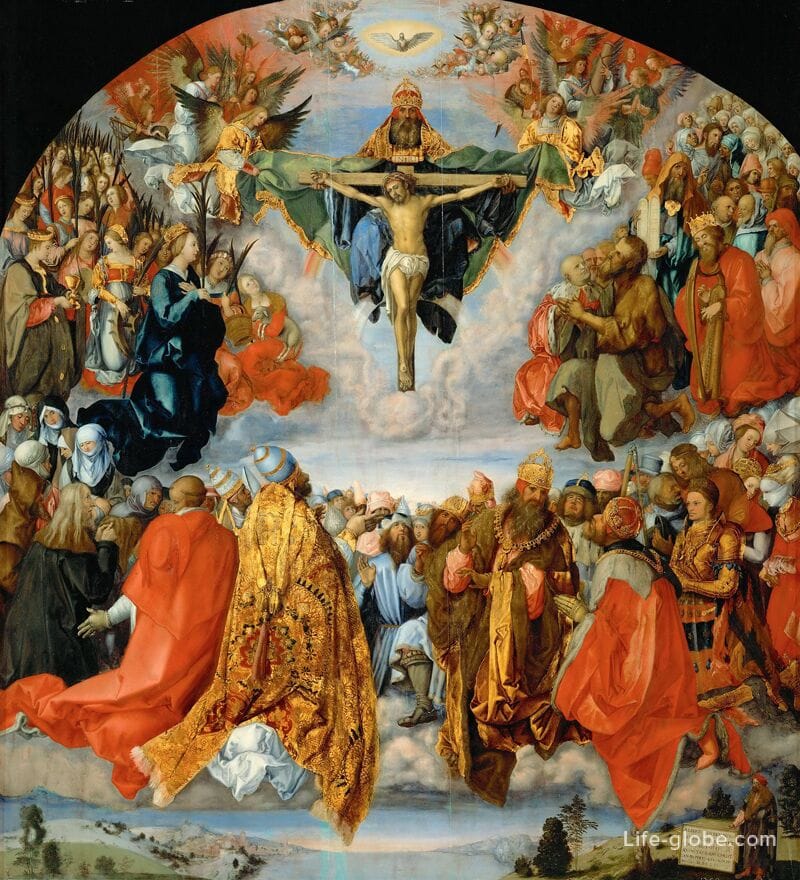
The ruins of the Church of St. Catherine (Katharinenkloster) are part of the ruins of the former convent of the Dominican Order in Nuremberg, famous for its medieval library.
The monastery was founded at the end of the 13th century. The monastery church was consecrated in 1297.
After the Reformation, the monastery lost its functions and was closed in 1596. Then it was used for various purposes.
In 1945, the monastery was destroyed and today the ruins of the former monastery church of St. Catherine, due to the special acoustics, are used for open-air concerts.
The address of the ruins of the church: Am Katharinenkloster, 6.
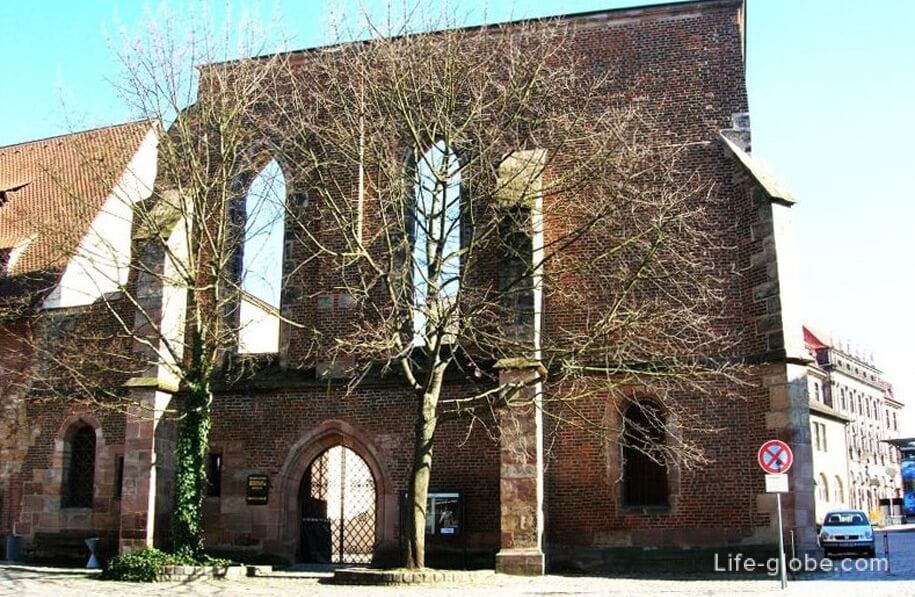
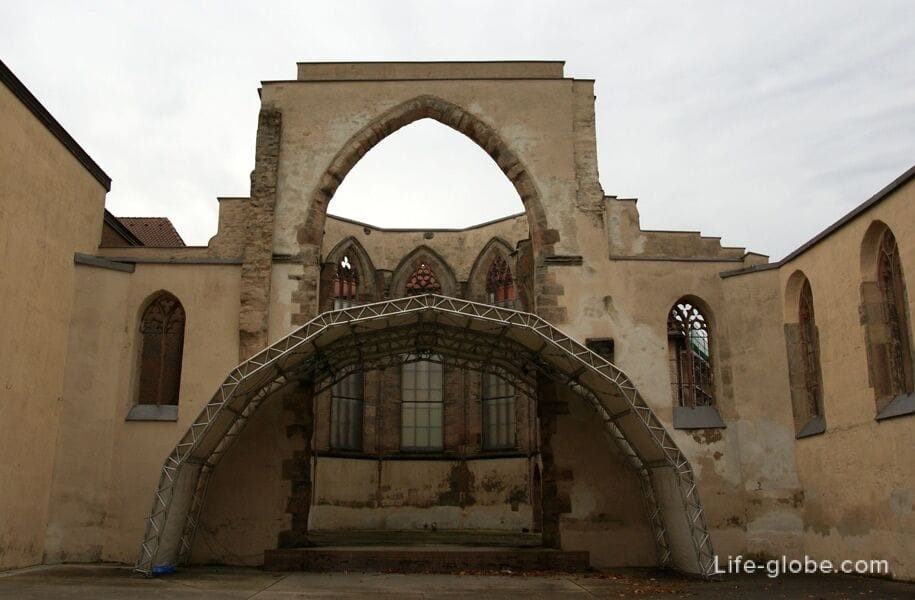
Nuremberg Fortress (Nürnberger Burg), also known as Kaiserburg Castle (Kaiserburg Nürnberg) - the former residence of the rulers.
Today, the Nuremberg Fortress is a museum, a symbol and the main attraction of the city. It is a group of medieval fortified buildings and is considered one of the most formidable medieval fortifications in Europe, which personified the power and importance of the Holy Roman Empire, as well as the outstanding role of the imperial city of Nuremberg.
Among other buildings in the Nuremberg Fortress are chapels:
- Chapel of St. Otmar and St. Walpurgia of Heidenheim (Burgkapelle St. Walburgis), also known as Walpurgis Chapel (Walpurgiskapelle). The choir tower church has a fortified tower, a sandstone stone structure with a gable roof, a turret with a bell. The first floor of the tower is in Romanesque style (mentioned in 1267-1268), otherwise the building belongs more to the 15th century;
- double imperial chapel (Burgkapelle) in Romanesque style, built in the 1200s.
The double chapel consists of two chapels, one above the other and connected only through a hole in the ceiling, which represents the hierarchical levels of medieval society - the lower tier was intended for knights and retinue; the middle tier, located on the same level with the base of the stone crucifix, was intended for the king and his inner circle; and the balcony, located on the wall opposite the altar, just below the level of the head of Christ on the crucifixion, only for the emperor.
The address of the fortress: Auf der Burg, 17.
Fortress website:kaiserburg-nuernberg. More about the Nuremberg Fortress...
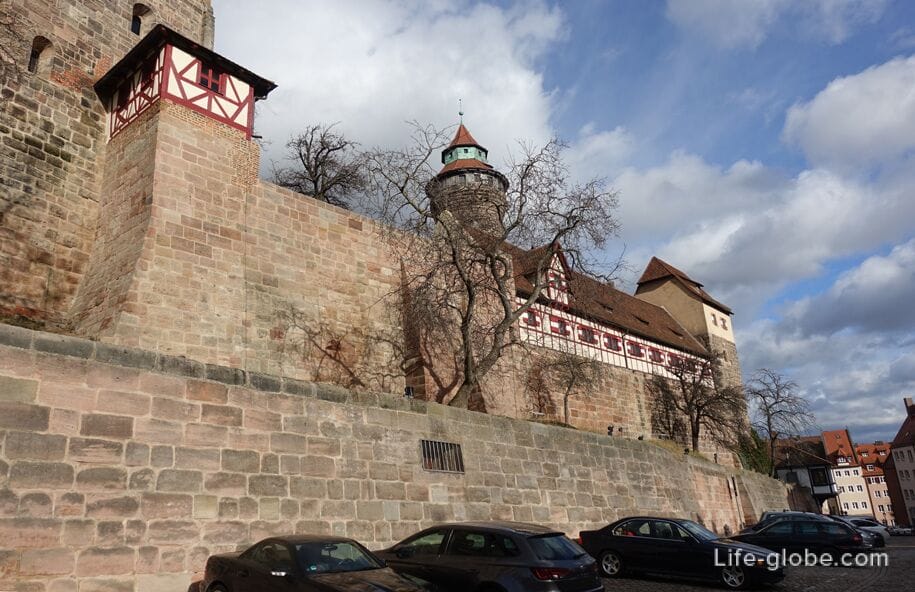
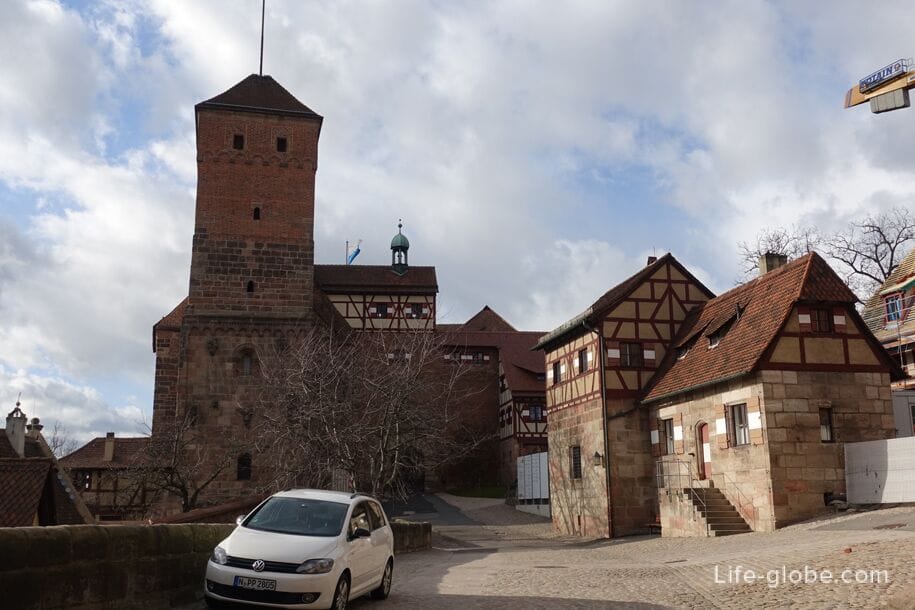
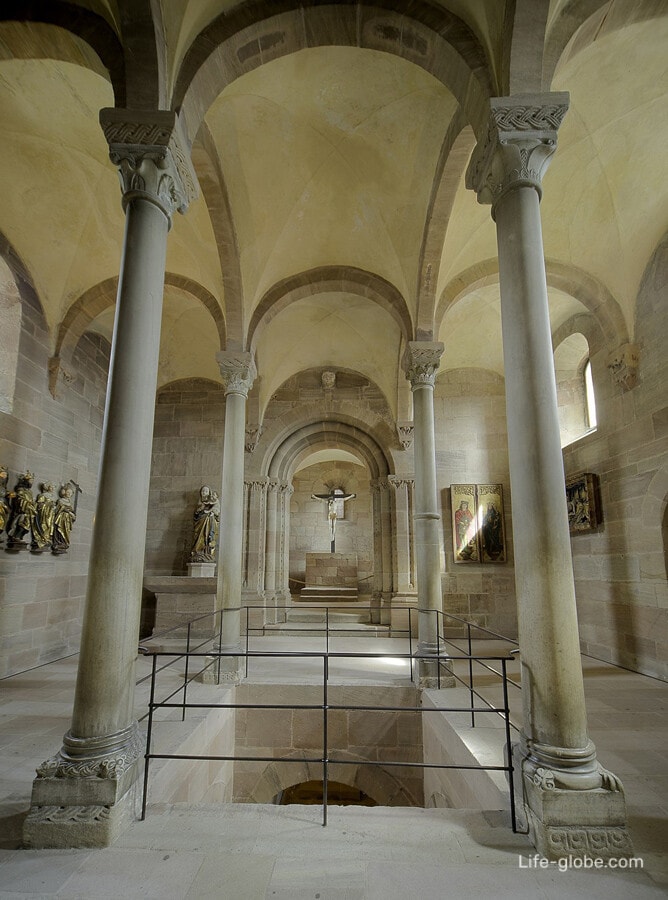
The Hospital of the Holy Spirit (Heilig-Geist-Spital) is the oldest and once the largest medical institution in Germany.
The hospital was built in 1332-1339 together with the Church of the Holy Spirit. The infirmary, as in many medieval cities, was dedicated to the Holy Spirit.
The imperial regalia were kept in the Church of the Holy Spirit, destroyed during the Second World War.
The walls of the hospital now house a nursing home and a restaurant "Heilig-Geist-Spital Nürnberg", with tables in the courtyard.
Due to the fact that the wing of the hospital is located above the waters of the river, and its arches are lowered into the water, locals also call the hospital "Nuremberg Glasses". Also noteworthy is the restored picturesque bay window with a pointed tower.
The hospital is located on the bow of the island of Schuette, at the address: Spitalgasse, 16. More about the Hospital of the Holy Spirit...
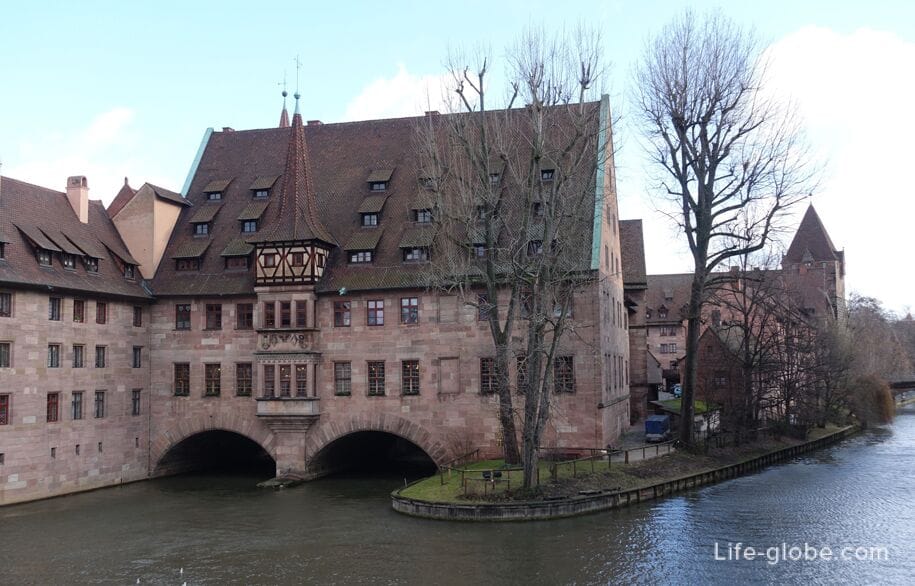
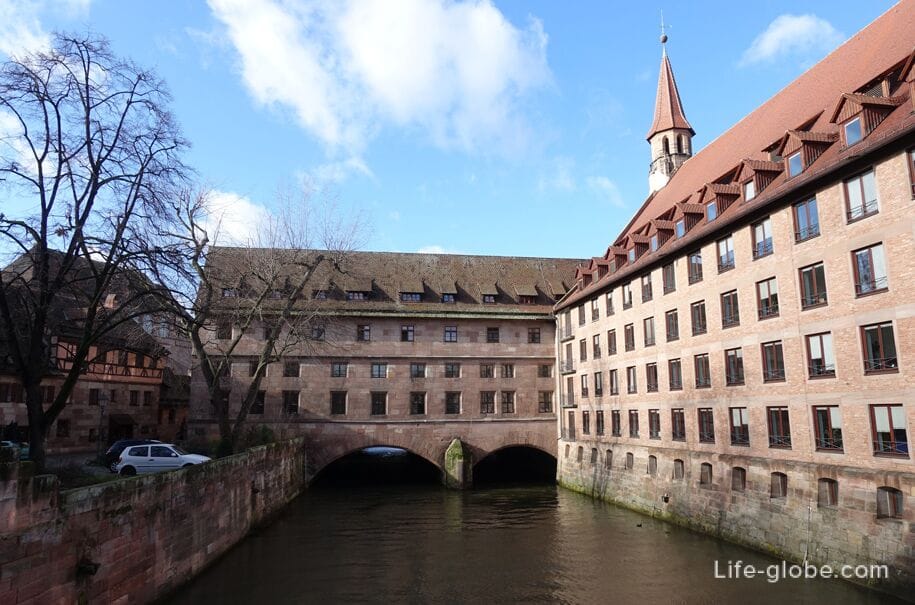
In 1857, the King of Bavaria presented the founder of the German National Museum (Franconian nobleman Hans Freiherr von und zu Aufses) with a former Carthusian monastery on the southern border of the old city of Nuremberg, whose unique ensemble, consisting of a monastery, a church and monastic dwellings of the 14th century, provided enough space for the collection of a nobleman.
The constant growth of the collection required the expansion of the museum's space. Since the beginning of the 20th century, neo-Gothic and modern extensions have been added to the monastery.
After the large-scale destruction during the Second World War, the appearance of the museum is formed, among other things, by the buildings of architect Sep Ruf, as well as the glass structure of the Museum Forum with today's lobby.
Today, the new and old buildings of the museum are a landmark and an architectural monument, they represent an ensemble, part of which is formed by the former monastery.
The German National Museum (Germanisches Nationalmuseum) is the largest museum of the cultural history of German-speaking regions in Germany.
The museum's collections showcase the history, culture and art of the regions where German is spoken or was once spoken, from prehistoric times to the present day.
The museum's website: gnm.de . More about the German National Museum...
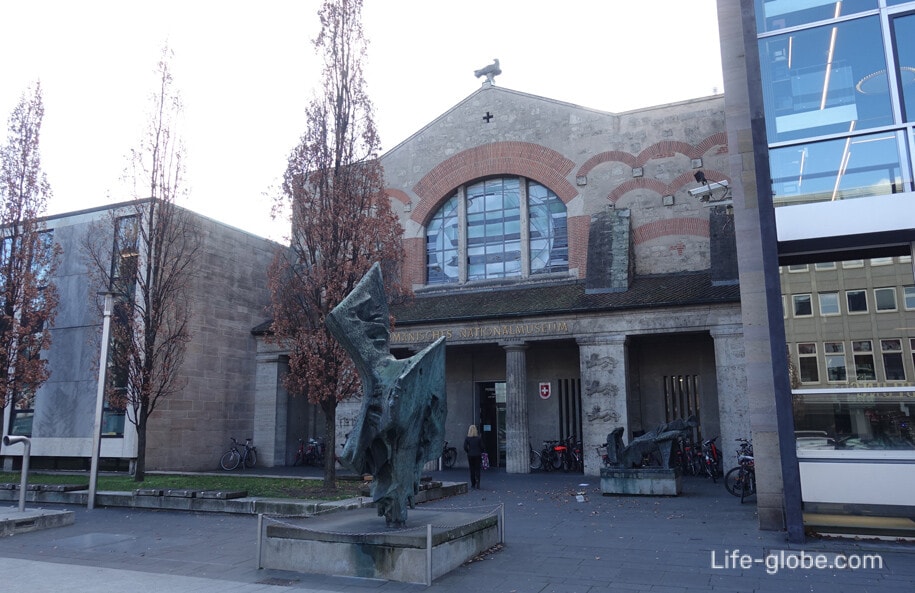

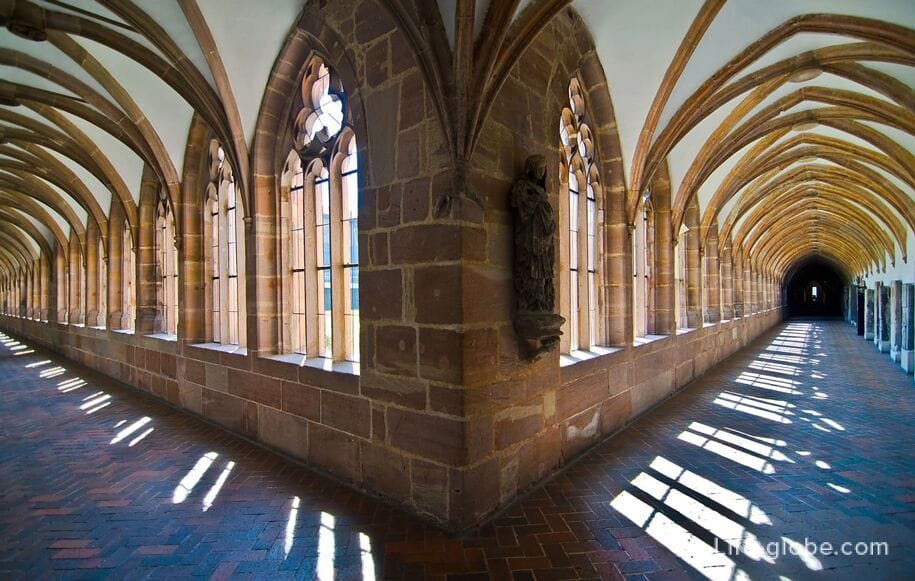
The synagogue monument (Synagogendenkmal) perpetuates the main city synagogue on Hans-Sachs-Platz, which was opened in 1874, had a Moorish-Byzantine style and was considered one of the most beautiful in Europe.
On August 10, 1938, the synagogue was blown up by the Nazis because it "spoiled the beautiful German ensemble of the city."
Today, on the site of the synagogue there is a memorial consisting of a relief of a defunct synagogue, created by Reinhard Heiber (1988), and a memorial stele in front of it, created by August Hofmann (1970).
To the left of the synagogue memorial is a plaque commemorating the execution of German businessman of Jewish origin Leo Katzenberger.
The monument is located near the Hospital Bridge (Spitalbrücke) on the island of Schütt.

There are also churches outside the city walls, among which two shrines are particularly noteworthy.
The Chapel of St. Rochus (Church of St. John) is located in the cemetery of St. John and St. Rochus (Johannisfriedhof, Johannisfriedhof) - a medieval cemetery outside the city walls, which is officially considered the most beautiful cemetery in Germany.
The cemetery is known for elaborate epitaphs and some tombstones. Among other celebrities, Albrecht Durer is buried in the cemetery.
The choir of the chapel was opened in 1377, and the nave - in 1395, in 1446 the sacristy was added. Subsequently, the chapel was reconstructed.
Website: st-johannisfriedhof-nuernberg.
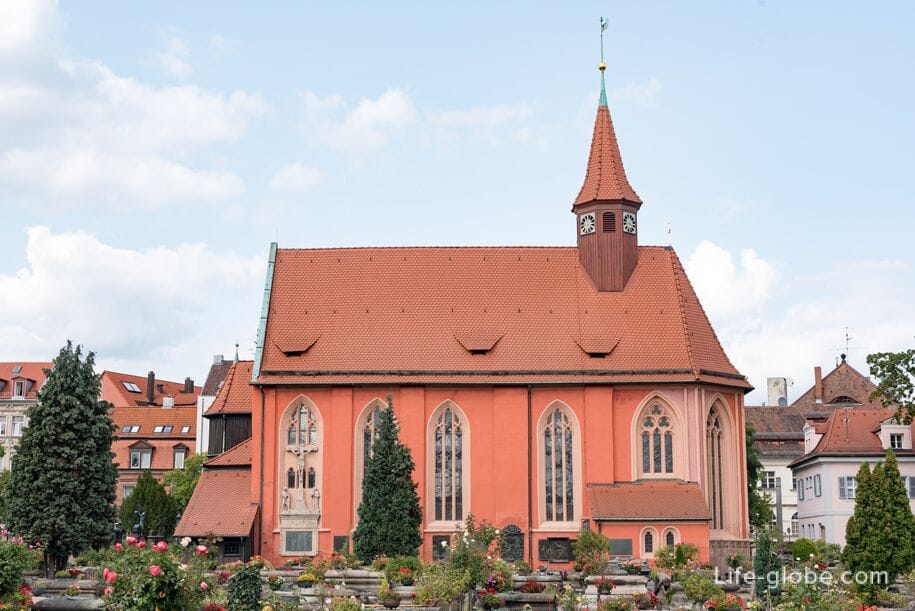
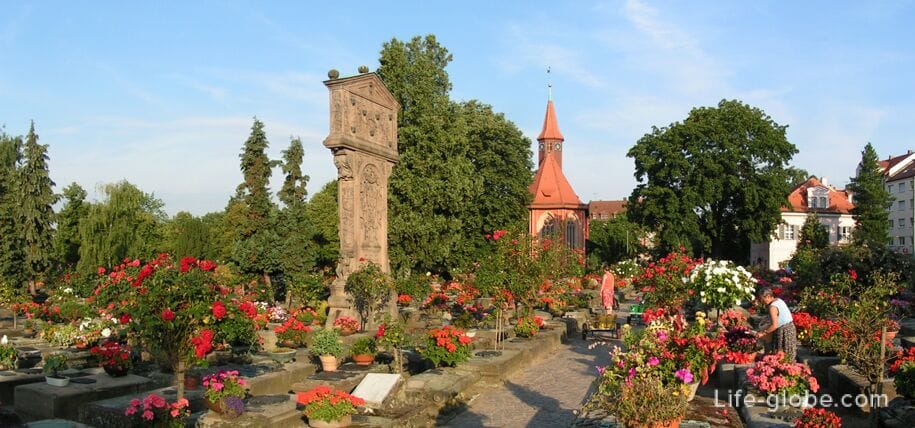
The Reformation Memorial Church (Reforms-Gedächtnis-Kirche) is a striking landmark in the northern part of Nuremberg and its round building with three towers is clearly visible from afar.
The church building was laid on June 11, 1935. The consecration took place on November 6, 1938. Two years later, a meeting house was opened opposite.
The church was badly damaged during the Second World War. Since 1945 it has been rebuilt and reopened in 1949.
There is an organ in the church; organ concerts are held.
Church address: Berliner Platz, 11.
Website: maxfeld-evangelisch.
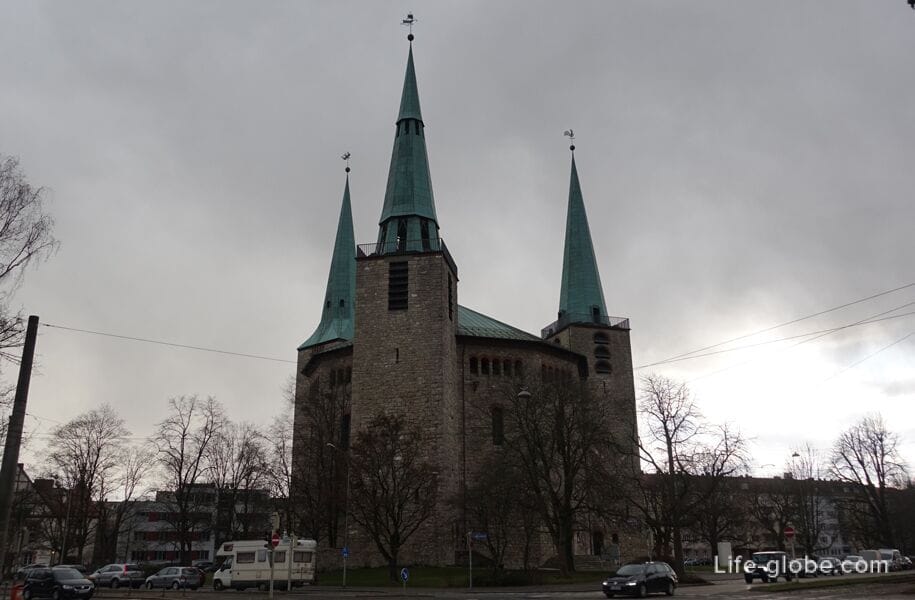
The Nuremberg Way of the Cross (Nürnberger Kreuzweg), also known as the Adam Kraft Way (Adam-Kraft-Kreuzweg), is a kind of example of the way of the Cross of Christ and has seven locations in the city of Nuremberg, created by Adam Kraft in 1506-1508.
The sculptor made to order seven steles depicting the way of Christ to Golgotha and inscriptions. The path led from the city walls and ended with a huge crucifix in the cemetery of St. John. Now the crucifix is in the courtyard of the Hospital of the Holy Spirit, and the original Steles have been replaced with copies.
The 1st stele is located at Burgschmietstraße 6;
2nd - Burgschmietstraße and the corner of Weigelstrasse;
3rd - Burgschmietstraße, in front of Kunstgießerei Lenz Art foundry;
4th - Burgschmietstraße and the corner of Campestraße;
5th - intersection between Burgschmietstraße and Johannisstraße;
6th - Johannisstraße and the corner of Rohledererstraße;
7th - east entrance to St. John's Cemetery.
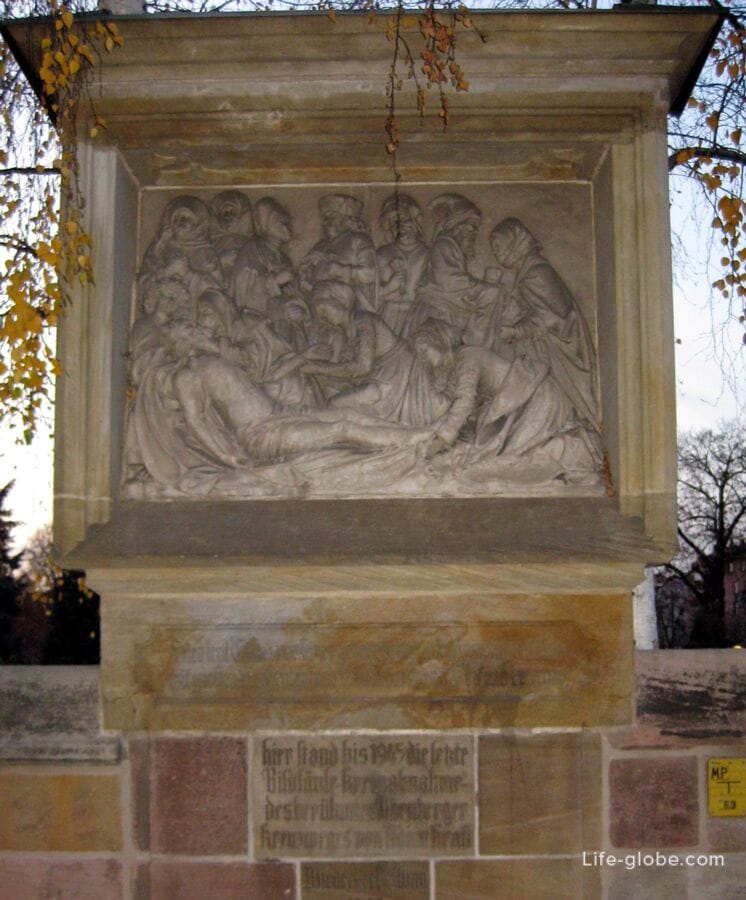
All accommodation facilities in Nuremberg, including in the historical center of the city and more remotely from it, can be viewed and booked here